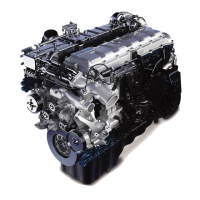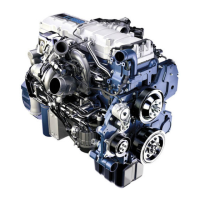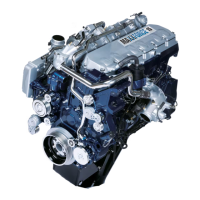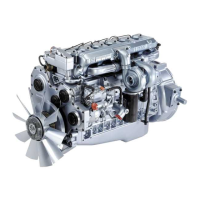6 PERFORMANCE DIAGNOSTICS 257
WARNING: To avoid serious personal injury,
possible death or damage to the engine or vehicle
– comply with the following:
When running the engine in the service bay, make
sure the parking brake is set, the transmission is
in neutral, and the wheels are blocked.
8. Run engine to reach normal engine operating
70 °C (158 °F) or higher, before measuring
crankcase pressure.
9. Run engine at high idle (no load) rpm. Allow the
gauge reading to stabiliz e b efore taking pressure
reading.
10. Record crankcase pressure on Diagnostic Form.
• If pressure is below specification, continue
Performance D iagnostics.
• If pressure is above specification, continue
with step 10.
Figure 335 Discharge port
11. If engine has an air compressor, rem o ve
discharge air line and retest.
• If pressure is below specification, repair or
replace air compressor.
• If pressure is above specification, continue
with step 11.
12. Disconnect VGT control module and retest.
• If pressure is below specification, reconnect
the VGT control module, and retest doing
Test 13 (Air Management) to see if crankcase
pressure increases as turbocharger demand
increases.
If pressure fluctuates above and below
specification, as the VGT is cyclin g, replace
the turbocharger.
• If disconnecting or cycling the turbocharger
does not bring pressure below specification,
continue with step 12.
13. Do Test 12 Relative Com pression Test to pin point
suspect cylinders.
14. Do Test 11 Injector Disable to further pin point
suspect cylinders.
15. Inspect air induction for dirt ingestion.
Possible Causes
High oil consumption and excessive crankcase
pressure may indicate the following:
• Dirt in air induction system
• Badly worn or broken rings
• Cylinder sleeves badly worn or scored
• Leaking valve seals or worn valve guides
• A restricted orifice in crankcase pressure test
adapter
• Failed turbocharger
• Failed air compressor
Low oil consumption and excessive crankcase
pressure may indicate the following:
• Air com pressor affecting crankc as e pressure.
• A restricted orifice in crankcase pressure test
adapter
EGES-270-1
Read all safety instructions in the "Safety Information" section of this manual before doing any procedures.
Follow all warnings, cautions, and notes.
©August 2008 Navistar, Inc.

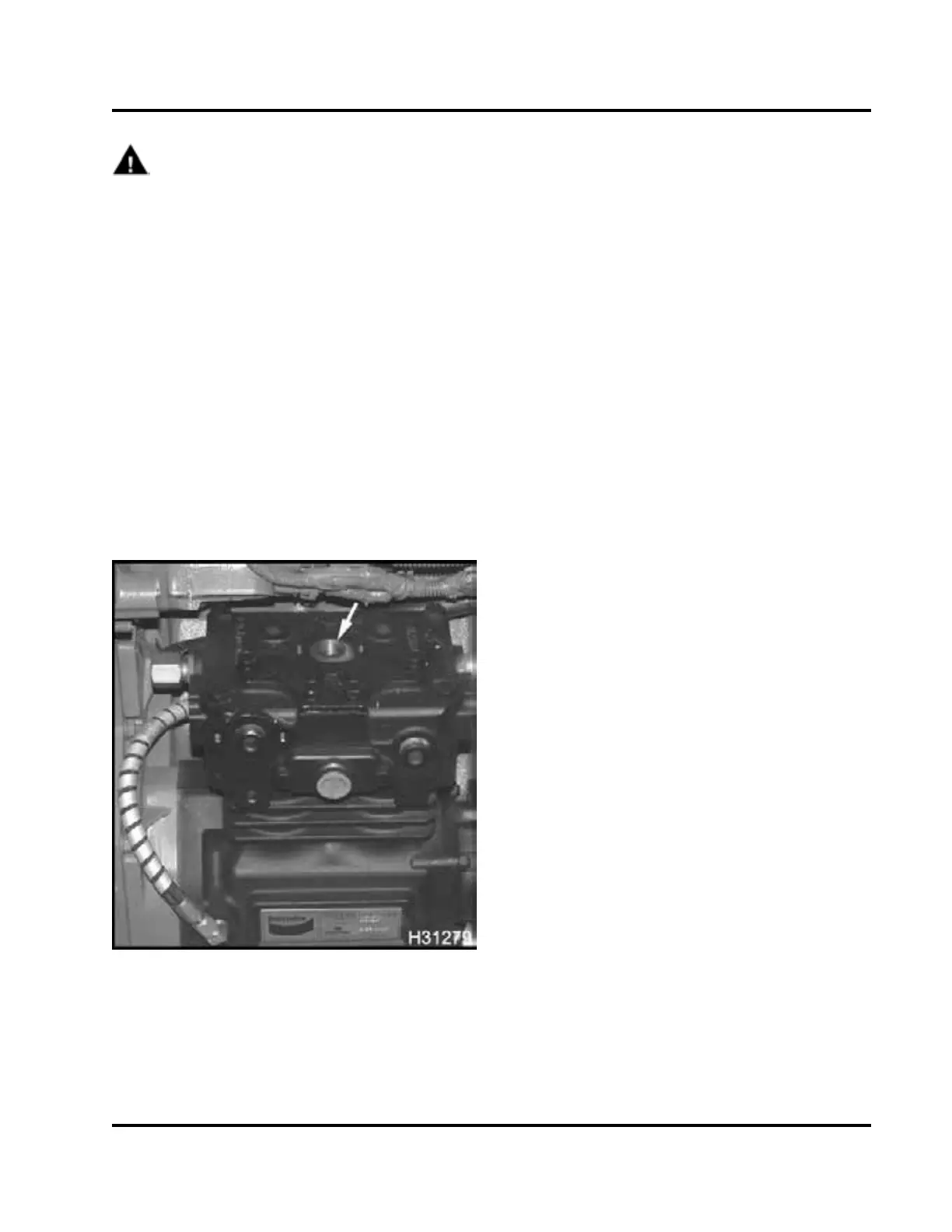